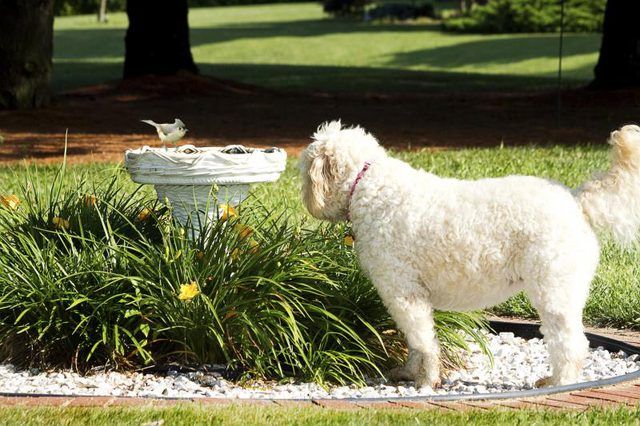Bulbs
Flower Basics
Flower Beds & Specialty Gardens
Flower Garden
Garden Furniture
Garden Gnomes
Garden Seeds
Garden Sheds
Garden Statues
Garden Tools & Supplies
Gardening Basics
Green & Organic
Groundcovers & Vines
Growing Annuals
Growing Basil
Growing Beans
Growing Berries
Growing Blueberries
Growing Cactus
Growing Corn
Growing Cotton
Growing Edibles
Growing Flowers
Growing Garlic
Growing Grapes
Growing Grass
Growing Herbs
Growing Jasmine
Growing Mint
Growing Mushrooms
Orchids
Growing Peanuts
Growing Perennials
Growing Plants
Growing Rosemary
Growing Roses
Growing Strawberries
Growing Sunflowers
Growing Thyme
Growing Tomatoes
Growing Tulips
Growing Vegetables
Herb Basics
Herb Garden
Indoor Growing
Landscaping Basics
Landscaping Patios
Landscaping Plants
Landscaping Shrubs
Landscaping Trees
Landscaping Walks & Pathways
Lawn Basics
Lawn Maintenance
Lawn Mowers
Lawn Ornaments
Lawn Planting
Lawn Tools
Outdoor Growing
Overall Landscape Planning
Pests, Weeds & Problems
Plant Basics
Rock Garden
Rose Garden
Shrubs
Soil
Specialty Gardens
Trees
Vegetable Garden
Yard Maintenance
How to Plant Stella de Oro Daylilies
How to Plant Stella de Oro Daylilies. A miniature daylily with enormous ornamental punch, "Stella de Oro" (*Hemerocallis "Stella de Oro"*) packs an abundance of riches onto its 1-foot high frame. In [**U.S. Department of Agriculture plant hardiness zones**](http://planthardiness.ars.usda.gov/PHZMWeb/) 3 through 10, its...

A miniature daylily with enormous ornamental punch, "Stella de Oro" (Hemerocallis "Stella de Oro") packs an abundance of riches onto its 1-foot high frame. In U.S. Department of Agriculture plant hardiness zones 3 through 10, its buttery-gold, ruffled trumpet flowers open from late spring to late summer. In mild-winter areas, its gracefully arching foliage remains green all year. Plant it properly, and one "Stella de Oro" may eventually produce 400 blooms in a single growing season.
When to Plant
Climate dictates the best time of year to plant bare-root "Stella de Oro." In hot-summer, mild-winter climates where the soil doesn't freeze, fall planting lets them establish and leaf out before extremely hot temperatures arrive.
In cold-winter climates, plant bare-root "Stella de Oro" in spring at least 60 days before summer temperatures are likely to peak. Planting in fall increases the chances of the roots' not establishing before the ground freezes.
As long as their root balls aren't disturbed, nursery container plants can go in the ground whenever the soil is workable.
Where to Plant
For maximum flowering, "Stella de Oro" needs at least six hours of daily sun. In most cases, plants in direct afternoon sun produce more flowers than those getting mostly morning sun. The exceptions are plants in very hot summer climates, and -- in some instances -- those planted in the shade of light-colored buildings.
Give hot-climate plants full morning sun, with shade between noon and late afternoon. Indirect, reflected light may be enough for the building-shaded plants to bloom their best; if it's not, they're easily transplanted. "Stella d'Oro" rarely flowers in deep shade.
Never plant "Stella de Oro" where its toxic leaves might tempt the family cat.
Site Preparation
Prepare a site large enough to space the "Stella de Oro" daylilies 1 to 1 1/2 feet apart.
Loosen the top 1 to 1 1/2 feet of the planting bed with a spade or tiller and work in a 3- to 4-inch layer of an organic soil amendment, such as well-aged compost or manure.
Also work in a granulated fertilizer with a 3:1:2 ratio of nitrogen, phosphorous and potash, as indicated by the N-P-K numbers on the label. One manufacturer, for example, recommends lightly scratching 1 1/4 cups of its 6-2-4 fertilizer granules into each 10 square feet of soil and watering well.
Follow your fertilizer label's application instructions, because brands vary according to formula.
Planting Methods
If the bare-root plants' roots are dry, submerge them in water for one or two hours before planting. Water a dry potted "Stella de Oro" until liquid runs from its drainage holes.
Cut bare-root plants' leaf fans back to 6 to 8 inches above the roots, trimming the tops into inverted "Vs." Use clean, sharp scissors disinfected between cuts in rubbing alcohol.
Dig holes wide enough for the roots. In a cold-winter climate, dig deeply enough for roots' tops to sit 1 inch below the soil line; elsewhere 1/2 inch is acceptable.
Hold a bare-root plant upright, center it in a hole and backfill with loose soil. Hold a container plant by its base, invert the container and slowly slide it free. Shake the rootball gently and trim damaged or encircling rots with sharp, disinfected stem cutters. Spread the roots, center it in a hole and backfill.
Tamp the soil lightly to eliminate air pockets. Water the transplants deeply enough to soak the roots, and cover the planting bed with a 2- to 3-inch layer of moisture-retaining organic mulch.
Watering After Planting
To establish quickly and perform well, "Stella de Oro" needs 1 inch of weekly rain or supplemental water, or about 6 gallons per 10 square feet of soil.
When the top 2 to 4 inches of soil feel dry or are too compacted to dig easily, water slowly so that the moisture sinks to the roots. For plants in loamy or clay soil, one weekly watering is generally enough. In sandy soil, water twice weekly with one-half the required amount.